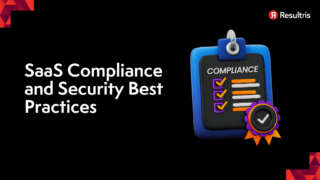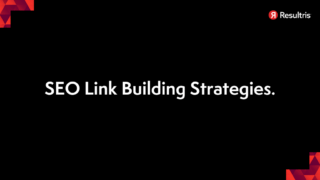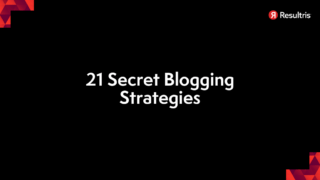

Written by: Tim Eisenhauer
Last updated:

Standing out isn’t just about having a great product—it’s about branding that resonates. We’re diving into the world of SaaS branding strategies, where creativity meets technology, and the results can be truly extraordinary.
For SaaS companies, it’s not just about selling software, it’s about selling an experience, a solution, a revolution. We’ll explore how successful SaaS brands have crafted their identity and how you can follow suit. So, if you’re ready to take your SaaS marketing to the next level, stick around. We’ve got some insights that just might change the game for you.
SaaS branding, a pivotal aspect of any software company’s growth strategy, engrosses us in its complexity and potential for monumental impact. It’s more than pushing out a product; it epitomizes delivering an encompassing experience, bringing solutions to nagging needs, and triggering a revolution in the software realm. Let’s delve into the issue with two facets that hone our understanding further.
Crafting a brand identity isn’t a fancy tag, but vital to any SaaS enterprise’s success. With the current inundation of similar solutions, it’s our brand identity that distinguishes us, captures customer attention, and encourages loyalty. Infusing our brand narrative with the unique essence of what we represent, and providing clear, concise messages about the solutions our software offers can significantly enhance brand identity.
Moreover, beyond sparking initial interest, a strong brand identity can help guide customer decisions, with the trust we’ve built through our branding playing a pivotal role. Remember, in SaaS patronage, customers aren’t just investing in a software product—they’re investing in us, our brand, our vision. Thus, our branding’s credibility becomes their path to problem-solving, adding another dimension to its importance.
Creating a distinctive, compelling SaaS brand demands thorough understanding of several key components. First in line, brand development encapsulates defining our core values, mission, and vision. It’s akin to crafting a brand signature—unique, unalterable, and footprinting the path towards a consistent, remarkable customer experience.
Secondly, we give emphasis to brand positioning, a step towards carving our niche. It’s about identifying the unique selling point, defining our competitive advantage, and setting our software apart. It’s often reinforced by incorporating customer testimonials and case studies as social proof, fortifying our brand’s reputation.
Lastly, effective communication isn’t an option—it’s a must. Each interaction with the brand—be it newsletters, advertisements, social media posts—must reflect and reinforce our direct, clear branding messages. Let’s remember, consistency in communication is the cornerstone of a resilient brand identity.
Undoubtedly, proper understanding and application of these components can create a SaaS brand that not only rides the tide but makes waves in the SaaS industry.
In developing our SaaS brand strategy, there’s a couple of essential components we’ve got to nail: defining brand positioning and crafting a unique value proposition.
Brand positioning represents our SaaS company’s unique spot in the mind of our audience. It’s how we differentiate ourselves from competitors and build our own niche. Here’s how we do it.
First, Perform a Competitor Analysis. That means identifying our competitors and their strategies in the market. This information gives us not only a view of the market landscape but also a hint on how to position ourselves uniquely.
Secondly, Define our Target Customer. We’ve got to know who they are, what they need, and how our product ideally fits into their life. It’s made up of demographic details like age, profession, and region, as well as psychographics like needs, aspirations, and pains.
Lastly, Sculpt the Brand Narrative. Once we understand our competition and our customers, we’re able to tell our story in a compelling and unique way that connects with our audience and sets us apart.
The value proposition is a critical piece of our SaaS brand strategy. It defines what makes our product beneficial, different, and worth choosing over competitors.
We first Identify what’s Unique. It’s about understanding what sets us apart from other SaaS companies in the market. This could be anything from special features, pricing, customer service, or something entirely unique to our brand.
Next, Communicate our Value. Simply specifying our unique selling points isn’t enough. We’ve got to articulate why these points are valuable to the customer, and how they solve their problems in a more effective way.
Finally, Make it Targeted. A powerful value proposition is tailored to our ideal customer. It’s in their language, it speaks to their needs and it makes it clear why they should choose us.
The brand development process is a complex undertaking with many moving parts. It’s not simply about creating a logo or developing a tagline. It’s about designing a total experience, creating something unforgettable in the world of SaaS, and above all, creating a brand that genuinely speaks to our audience. Trust us, taking the time to define our brand positioning and craft our unique value proposition will pay dividends in the long run.
Visual identity and brand aesthetics serve as a key pillar in the bridge between SaaS branding and audience perception. Let’s dig deeper into how you can resonate with your target audience by sketching an impactful visual identity.
A logo, the prominent component of brand visual identity, influences how a prospect perceives a brand. It’s a symbol, compact yet potent, that represents a brand’s essence. The logo stands as the company’s face, and thus, creating a powerful and memorable one ought to be a priority in brand development.
Crafting a logo involves creativity, market research, and deep understanding of the brand values. The design must be unique, simple, and unforgettable. Consider the logo of successful SaaS companies like Slack, Dropbox, or Salesforce. They’ve incorporated vibrant colors, simplicity, and symbolism to create an outstanding visual representation of their brand. Remember, creating an impactful logo isn’t about beautiful design alone. Rather, it’s about designing a symbol that speaks volumes about the brand.
All elements of brand aesthetics, including color palette and typography, need to rhyme. They should reflect the brand’s image, voice, and core values. When defining a color palette, consider the emotions and perceptions different colors induce. For example, blue often symbolizes trust, strength, and reliability, making it a prevalent choice for technology and SaaS companies.
On the flip side, typography is another crucial facet of brand aesthetics. A well-chosen font can underline your brand’s personality and make it stand out from the crowd. Consider fonts that fit into your overall design and vibe. Salesforce, for instance, uses a custom sans-serif typeface, contributing to the brand’s sharpness and modern feel.
Let’s now shift our attention to the power of content marketing, an essential component of SaaS branding. Content marketing refers to the creation and sharing of valuable content, with the aim of engaging the audience, establishing trust, and, naturally, driving profitable customer action.
To glean real benefits from content marketing, we advocate implementing strategic actions. An example – blogging. Through regular blog posts, we’re able to communicate our brand’s voice, highlight our expertise, and ultimately, establish our SaaS product as a trusted resource. It’s not just about selling a product, but providing useful information that directly benefits our readers. Additionally, blogging helps in brand development by providing consistent content that reflects our brand personality and core values.
Let’s also not forget about the role of thought leadership in content marketing. If we consistently provide relevant, insightful blogs, we reinforce our brand positioning as an authority in the SaaS sector. Readers begin to appreciate us not only as a service provider but as a genuine source of industry knowledge and advice.
Given the digital nature of the SaaS business model, video content plays a pivotal role in branding efforts. The power of visuals can’t be understated – videos can provide an interactive and engaging way for potential customers to understand our SaaS product. The style and content of these videos should align with our brand personality, adding another dimension to our brand identity.
From demonstrative how-to’s to insights into our company culture, quality video content helps in boosting our online presence and, importantly, forms a deep connection with viewers. Remember, the more relatable and relevant our brand feels to our customers, the better the chance of fostering long-term loyalty.
To sum it up, effective content marketing directly contributes to our SaaS branding endeavors. By delivering quality blog posts and proposing creative video content, we’re not only enhancing our brand presence but also enriching our relationships with our customers. Effective brand communication, at its core, is all about nurturing that invaluable connection with our audience.
As we continue our exploration of SaaS branding strategies, let’s turn our attention to social media. Arguably the digital era’s most potent tool, social media can usher in substantial brand awareness if utilized proficiently.
Creating an online community on various platforms is pivotal to brand development. By offering a space where users can exchange ideas and experiences related to your service, you’re catalyzing a connection that extends beyond the customary business-client relationship.
For optimal results, we advise the use of platforms such as Facebook, LinkedIn, Instagram, and Twitter, each known for their distinctive user engagement methods. For example, LinkedIn, due to its professional inclination, excels in establishing a brand’s thought leadership. In contrast, Instagram, with its highly visual platform, aptly showcases a brand’s creativity and personality.
Social media engagement, a cornerstone of SaaS branding, demands a dynamic and humanizing approach. Encourage engagement by posing open-ended questions, conducting polls, and sparking discussions. Regularly sharing valuable content fosters a buzz around your brand and positions it as a reliable source of information.
Remember, two-way communication is critical—promptly respond to comments and direct messages to demonstrate you value your community’s feedback. Recognize your most engaged followers, perhaps through shout-outs or rewards, as they could potentially become brand ambassadors, further amplifying your brand’s reach.
Implementing the above strategies, coupled with consistency, aligns well with the broad goal of brand positioning in the SaaS landscape. By tapping into the power of social media, you’re essentially providing a personalized user experience which, over time, transitions into brand loyalty—a factor integral to the success of any SaaS company.
Branding isn’t just about your logo, colors, or tagline. It extends far beyond that, stretching into every interaction a customer has with your company. One key area where your branding can make a significant impact is in the customer experience, especially in areas such as support, services, and the ways in which you gather and implement customer feedback.
A brand isn’t simply a promise; it’s an expectation of consistency. This becomes particularly true with our support and service offerings. Optimizing a customer’s interaction with our services goes a long way in cementing our brand’s reputation in their minds. From the promptness of our replies, to the politeness of our interactions, every element embodies our brand. For instance, a 24/7 chat support embodies a brand that’s committed to customer convenience any time of day. On the other hand, for a brand focused on personalized care, using a dedicated client service manager could be an apt strategy. Bottom line: services and support offered should echo the brand values consistently.
Feedback is a gift. It gives us an understanding of what’s working in our SaaS offering and what isn’t. Deploying effective systems that collect customer feedback demonstrates our commitment to continuous brand development and improvement. But that’s only the first part. Implementing this feedback is where real growth happens. Reacting to feedback ramps up customer satisfaction, showing our audience that we listen, learn, and adapt. Thus, a brand’s strength can lie in its ability to heed feedback and enact change. As an illustration, a complaint about complicated user interface might instigate a change towards a more user-friendly design, reflecting the adaptive and customer-centric nature of the brand.
Remember, SaaS branding isn’t just about spreading awareness about who we are. It’s about demonstrating our values in every aspect of the business and ensuring those values align with the expectations of our customer base. Understanding the role of a strong customer experience is a critical part of this process.
After going through the critical steps of brand development, brand positioning, and SaaS branding, it’s time to evaluate whether your efforts are bearing fruit.
Regular assessments enable us to keep track of the brand’s growth and figure out areas for improvement. One practical way to estimate the impact of branding is by analyzing brand awareness metrics. These measurable indexes, like website traffic, search volume data, and social media mentions, indicate the level of familiarity and recognition that our brand has in the market. For instance, an increase in the number of people visiting our site indicates growing interest and awareness. Similarly, an uptick in social media buzz suggests more people discussing our brand, signaling better awareness.
Also, websites such as Google Trends and tools like SEMRush can provide quantifiable data on search volume trends. These resources can measure relative interest in our brand over time, helping us determine if our branding strategies are successful.
Another essential aspect to consider when measuring branding efforts is customer satisfaction. It’s more than just an indicator of product quality or service; it’s a reflection of how well our brand fulfills customer expectations.
For example, short and straightforward customer satisfaction surveys can offer useful insights. Questions like “How satisfied are you with our product?” or “Would you recommend our service to others?” can be pivotal. High scores typically indicate that we are successfully imbuing our values in every aspect of our business, from our product offerings to our customer ser-vice. It’s a signal that although SaaS branding is more than just awareness, we are successfully embodying our values in every business aspect.
Furthermore, recurring customers and client referrals also portray a mutually beneficial relationship, reinforcing our brand strength in the long run. This manifest loyalty shows us that our branding strategies efficiently meet customer expectations consistently, which plays a big role in shaping a strong SaaS brand.
So there you have it, folks! We’ve walked you through the ins and outs of SaaS branding strategies. We’ve seen how critical it is to define our core values, communicate effectively, and craft a brand strategy that stands out. We’ve also understood the power of measuring our branding success. From website traffic and social media mentions to customer satisfaction surveys and recurring customers, these metrics tell us if we’re hitting the mark. But remember, it’s not just about numbers. It’s about living up to our brand values, exceeding customer expectations, and building a brand that’s not just strong but also loved. So let’s get out there and make our SaaS brands shine!




